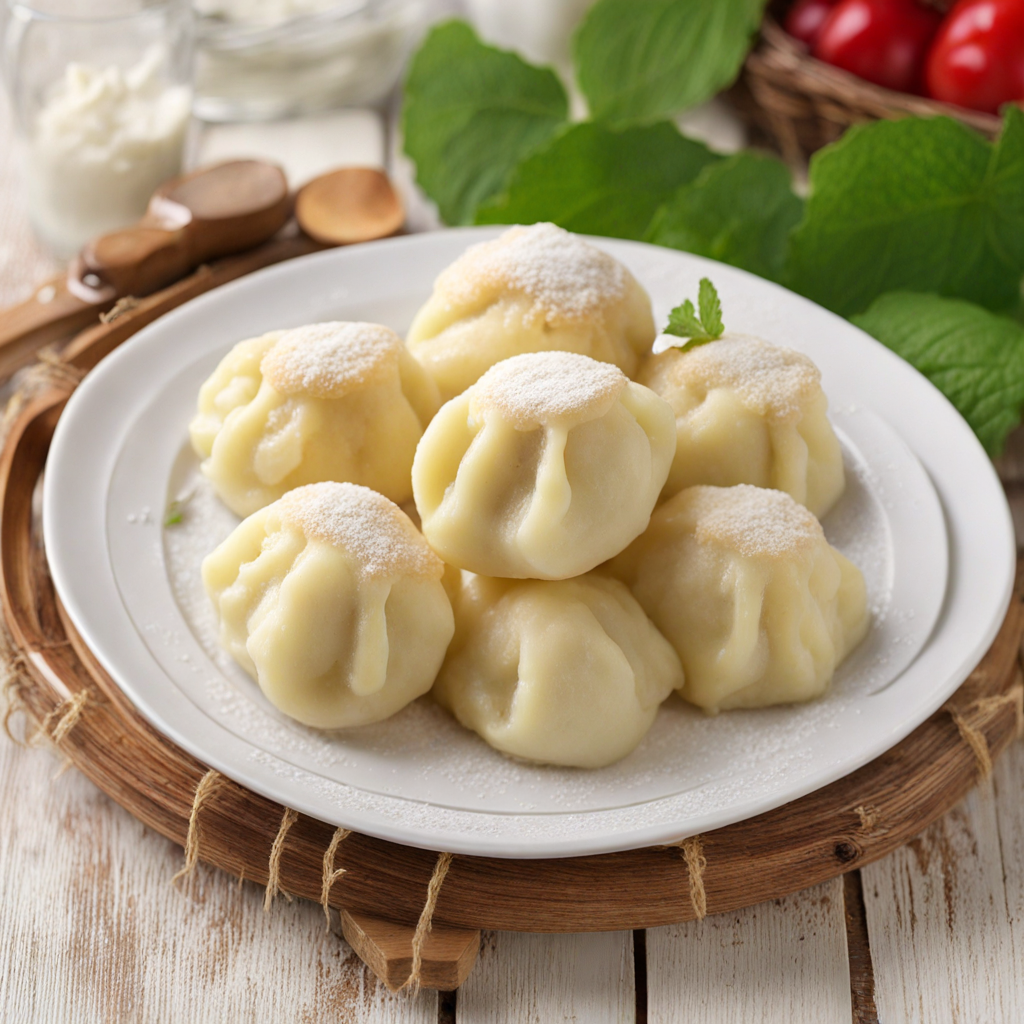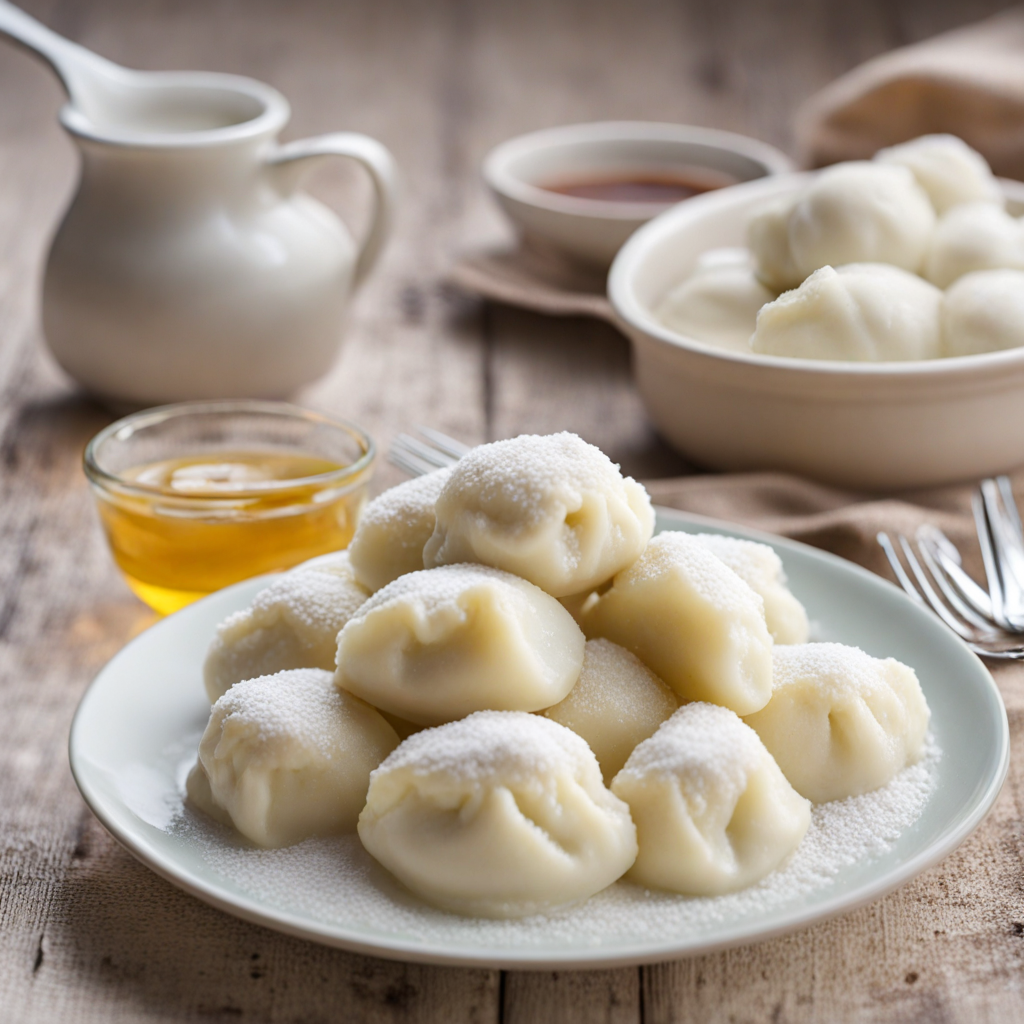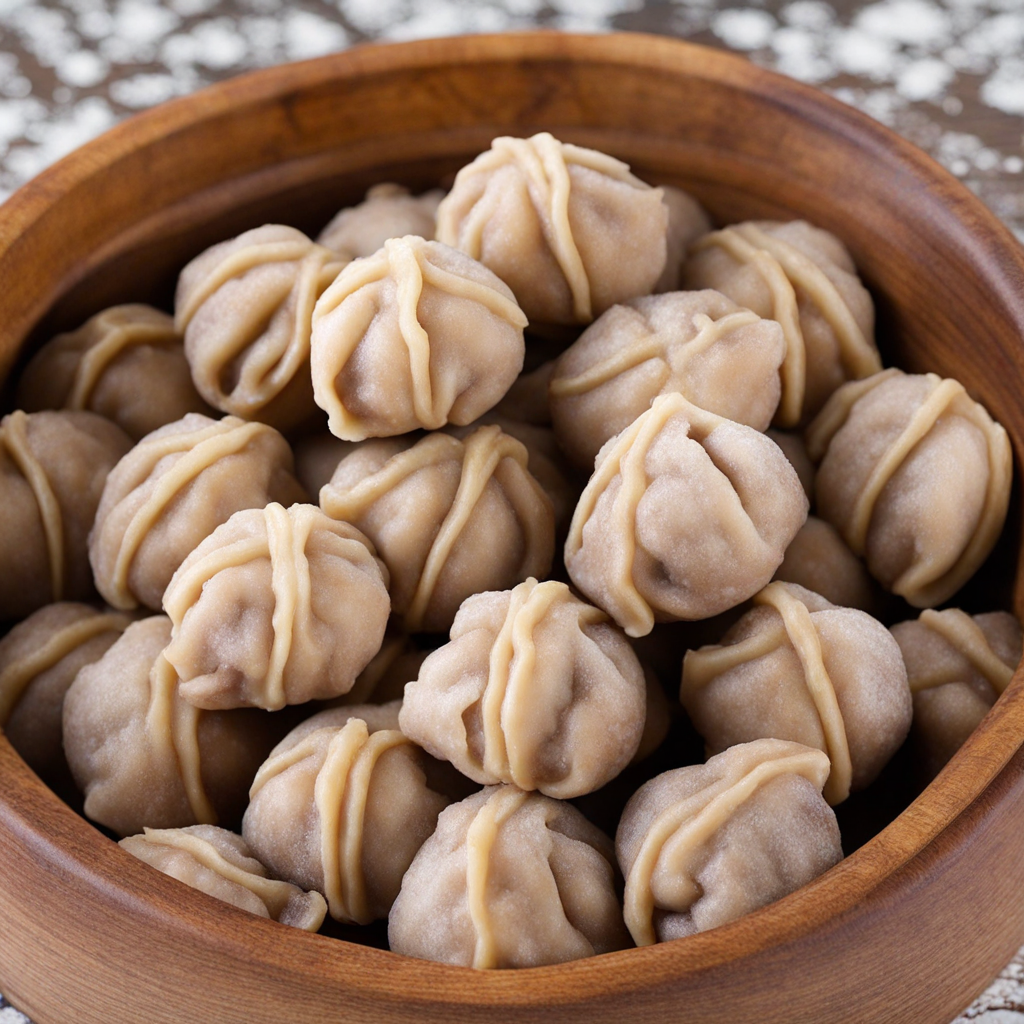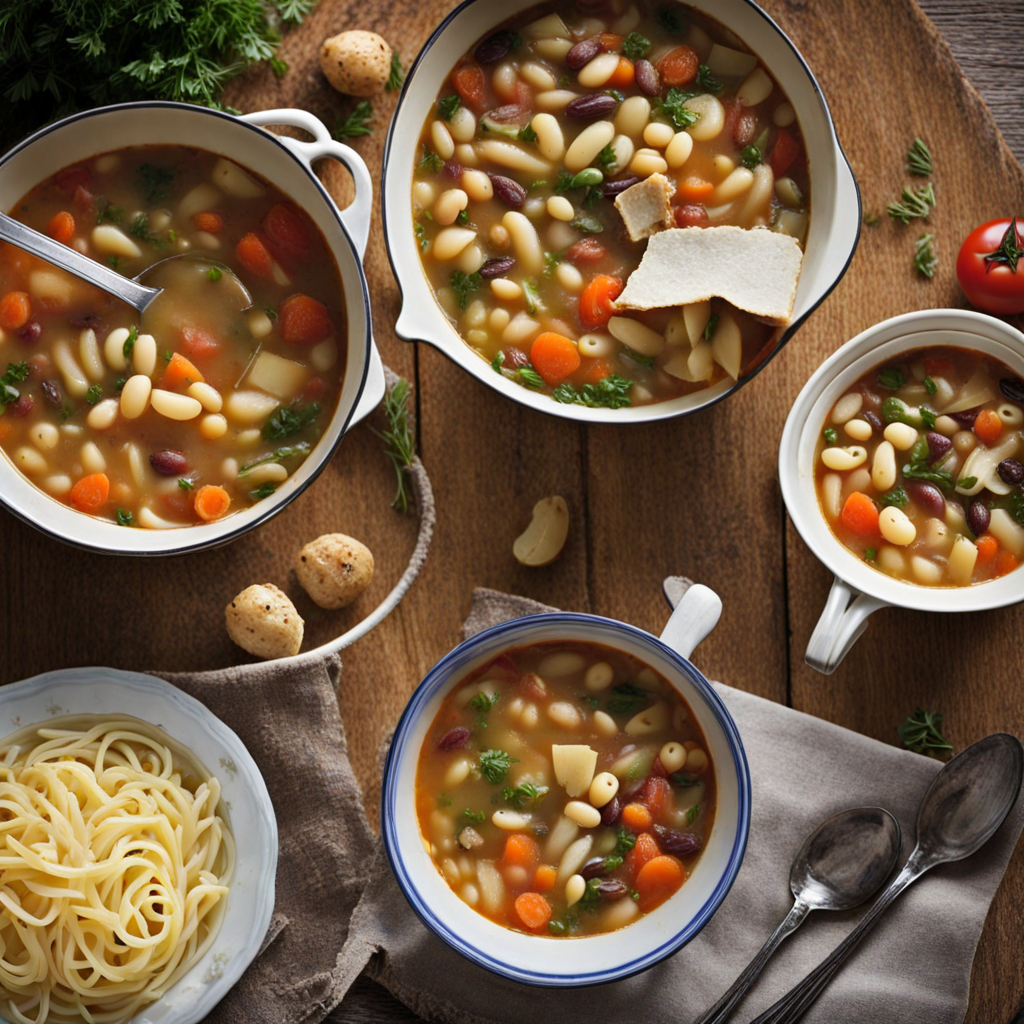Cottage Cheese Dumplings
Cottage Cheese Dumplings, known as "Štruklji" in Slovenia, are a delightful traditional dish that beautifully showcases the country's culinary heritage. These dumplings are primarily made from a rich and creamy cottage cheese filling, which is often blended with eggs, flour, and a hint of salt to create a velvety texture. The dough is rolled out and envelops the cheese mixture, then shaped into cylindrical forms or rolled into logs, which are either boiled or steamed, resulting in a tender, pillowy bite that melts in your mouth. The flavor profile of Cottage Cheese Dumplings is subtly savory, with the fresh taste of cottage cheese being complemented by a dash of nutmeg or herbs, depending on the recipe. They can be served in various ways: drizzled with melted butter, sprinkled with breadcrumbs, or even topped with a variety of sauces. This versatility allows for creative twists, making them a comforting staple that can be enjoyed as a main dish or a side. These dumplings are not just a treat for the palate; they also carry a sense of nostalgia and tradition. Often prepared for family gatherings or special occasions, they embody the warmth of Slovenian hospitality. Whether you enjoy them during a festive meal or as a cozy dinner at home, Cottage Cheese Dumplings offer an unforgettable taste experience that transports you to the heart of Slovenia's rich culinary landscape.
How It Became This Dish
Skutni Cmoki: A Culinary Journey Through Slovenia’s Cultural Heritage Among the diverse and rich tapestry of Slovenia's culinary traditions, Skutni cmoki stands out as a beloved dish that embodies the heart and soul of Slovenian cooking. These delightful cheese dumplings, known for their creamy filling and tender texture, have deep roots in the country's history, reflecting the influences of its geography, agriculture, and cultural exchanges. This essay explores the origins, cultural significance, and evolution of Skutni cmoki, showcasing how a simple dish can encapsulate the essence of a nation’s culinary identity. Origins of Skutni Cmoki The origins of Skutni cmoki can be traced back to the rural traditions of Slovenia, where agrarian lifestyles were the norm. The dish derives its name from "skuta," which refers to the soft cheese made from curds, a staple ingredient in Slovenian households. Skuta is traditionally made from cow's milk, enriched by the lush pastures of the Slovenian countryside, where dairy farming has been a significant part of the livelihood for centuries. The concept of crafting dumplings from simple ingredients is not unique to Slovenia; however, the Slovenians have developed their own distinctive versions that reflect local customs and available resources. The Slovenian landscape varies from the rolling hills of the Prekmurje region to the mountainous terrains of the Julian Alps, each contributing unique flavors and ingredients to the local cuisine. Cultural Significance Skutni cmoki holds a special place in Slovenian culture, serving as a symbol of comfort, home, and community. Traditionally, these dumplings were made during family gatherings or festive occasions, where the act of cooking and sharing food served to strengthen familial bonds. The preparation of Skutni cmoki often became a communal activity, involving multiple generations of family members coming together to share recipes, techniques, and stories. These dumplings are often served with a variety of accompaniments, such as melted butter, roasted breadcrumbs, or seasonal fruits, elevating their flavor and making them suitable for both savory and sweet applications. This versatility has allowed Skutni cmoki to transcend mere sustenance, becoming a cherished dish that can fit into various culinary contexts, from everyday meals to festive celebrations. In addition to their familial importance, Skutni cmoki also represents Slovenia's connection to its agricultural heritage. The dish highlights the use of local ingredients, showcasing the country’s dairy farming traditions and the importance of seasonal produce. Slovenia's commitment to sustainability and local foods is evident in the way Skutni cmoki is prepared and enjoyed, often relying on ingredients sourced from local farms and markets. Development Over Time As Slovenia has evolved through the centuries, so too has the preparation and presentation of Skutni cmoki. While the core ingredients have remained relatively unchanged, the methods and accompanying dishes have adapted to reflect contemporary culinary trends. In the early 20th century, Slovenia underwent significant social and political changes, including the aftermath of World War I and the subsequent formation of the Kingdom of Serbs, Croats, and Slovenes (later Yugoslavia). During this time, traditional cuisine began to be influenced by broader Balkan flavors and techniques. The introduction of spices, herbs, and ingredients from neighboring regions offered new opportunities for innovation in traditional dishes, including Skutni cmoki. In the late 20th century and early 21st century, Slovenia experienced a culinary renaissance, driven by a growing interest in local and organic foods, as well as a desire to preserve traditional recipes. Chefs and home cooks began to experiment with Skutni cmoki, incorporating modern cooking techniques and presentation styles while remaining true to the dish's essence. For instance, some chefs have embraced fusion cuisine, incorporating international flavors or presenting the dumplings in novel ways, such as in gourmet settings or as part of tasting menus. The rise of Slovenia as a gastronomic destination also played a pivotal role in reviving traditional dishes. As tourism increased, chefs sought to showcase Slovenia's culinary heritage, including Skutni cmoki, to visitors eager to experience authentic Slovenian cuisine. This newfound recognition helped elevate the dish beyond its humble roots, allowing it to gain a place on menus in both local eateries and high-end restaurants. Modern Interpretations and Future Prospects Today, Skutni cmoki continues to hold a cherished place in Slovenian households, often appearing at family gatherings, community celebrations, and festivals. As food culture evolves, so too does the way these dumplings are prepared and enjoyed. Modern interpretations have introduced variations such as gluten-free or vegan options, catering to diverse dietary preferences while maintaining the essence of the dish. Moreover, the increasing global interest in Slovenian cuisine has encouraged a new generation of chefs and food enthusiasts to explore the rich history of Skutni cmoki. Culinary workshops and classes focused on traditional Slovenian cooking have emerged, allowing participants to learn the art of making these dumplings from scratch. This revival of interest not only preserves the heritage of Skutni cmoki but also ensures that it remains a vibrant part of Slovenia's culinary future. Conclusion In conclusion, Skutni cmoki is more than just a dish; it is a testament to Slovenia's rich agricultural heritage, communal values, and evolving culinary landscape. From its humble origins rooted in rural traditions to its modern-day interpretations that reflect a commitment to sustainability and creativity, Skutni cmoki serves as a delicious symbol of Slovenia's identity. As Slovenia continues to embrace its culinary heritage while welcoming innovation, Skutni cmoki will undoubtedly remain a beloved staple, cherished by generations to come.
You may like
Discover local flavors from Slovenia







